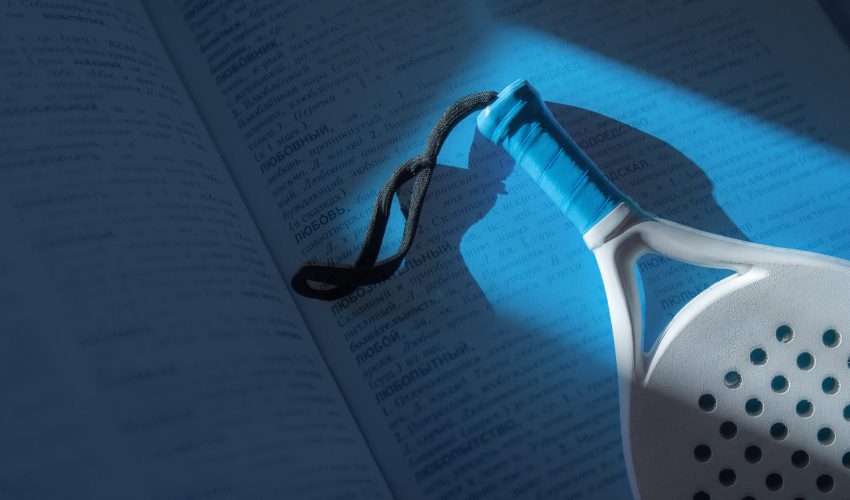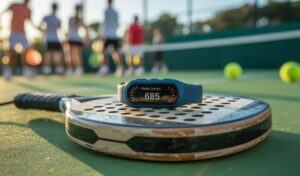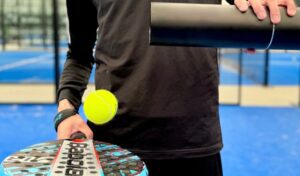Padel has rapidly emerged as one of the world’s fastest-growing sports, and as the padel craze spreads across the globe, learning the language of the game becomes essential – Padel Terms.
Whether you’re a complete beginner picking up a racket for the first time or a seasoned competitor seeking to sharpen your communication and tactical edge, mastering padel terminology is key. This guide will walk you through the most important terms in padel – from basic court elements to advanced techniques – so you can play smarter, communicate better, and enjoy the sport to its fullest.
Court & Equipment Terminology
Before diving into tactics and techniques, it’s crucial to understand the environment you’re playing in and the tools you use.
Court
The padel court is enclosed and measures 10m x 20m. Divided by a net and surrounded by walls, it’s smaller than a tennis court, leading to faster-paced, more tactical play.
Walls
Padel’s walls (glass and mesh) are part of the game. You can use them during rallies, creating rebounds and unpredictable angles that make the game unique.
Net
Standing at 0.88m in the center and 0.92m at the posts, the net plays a big role in positioning and shot strategy.
Service Box
Also known as the service area, this rectangular zone is where the serve must land – diagonally across from the server.
Racket / Paddle
Solid-faced and perforated, padel rackets (often called “paddles”) are shorter than tennis rackets, stringless, and designed for control and maneuverability.
Ball
Slightly depressurized compared to tennis balls, padel balls are built for bounce control within the enclosed court.

Basic Gameplay Terms
Understanding the foundation of how padel is played helps you follow matches and execute strategies better.
Serve / Service
Must be underhand and below waist level after a bounce. It must land diagonally into the service box – power takes a backseat to precision.
Return
The opponent’s response to a serve. The ball must bounce once before being returned and can’t hit your side’s walls first.
Volley
A shot played before the ball bounces. Crucial in net play, volleys in padel are quick and controlled due to the small court.
Let
A point replay – commonly when a serve touches the net but still lands correctly.
Fault
Includes serving errors, hitting the net, or letting the ball bounce twice before a return.
Winner
A shot that ends the rally by being unreturnable – can be powerful, clever, or well-placed.
Advanced Shot Techniques
These Spanish-origin terms describe specialized padel shots used in high-level play.
Bandeja (Tray)
A defensive overhead shot between a volley and a smash. Keeps you at net while applying pressure.
Vibora (Viper)
An aggressive slice shot with spin. Hard to return due to unpredictable bounces off the walls.
Bajada (Descent)
A shot taken after a ball rebounds off the back glass – can be defensive or attacking.
Globo (Balloon)
A lob over opponents at the net, forcing them to the back and giving you control.
Salida de Pared (Wall Exit)
Played after the ball hits your back wall. Perfect timing and positioning are essential.
Contra-pared
A shot hit against your own side wall before crossing the net – adds deception and tricky angles.
Tactical & Strategic Terms
These terms are used to describe match strategy, movement, and positioning.
Net Position
Dominant court spot near the net, where you can control points and pressure your opponents.
Back Court
Where defensive play happens – by the glass walls. Patience and consistency are key here.
Cross-Court
Diagonal shots that stretch your opponents and open up angles.
Down the Line
Straight shots down the court’s sideline – great for surprising your opponents.
Approach Shot
Used to advance toward the net. Placement over power is the goal.
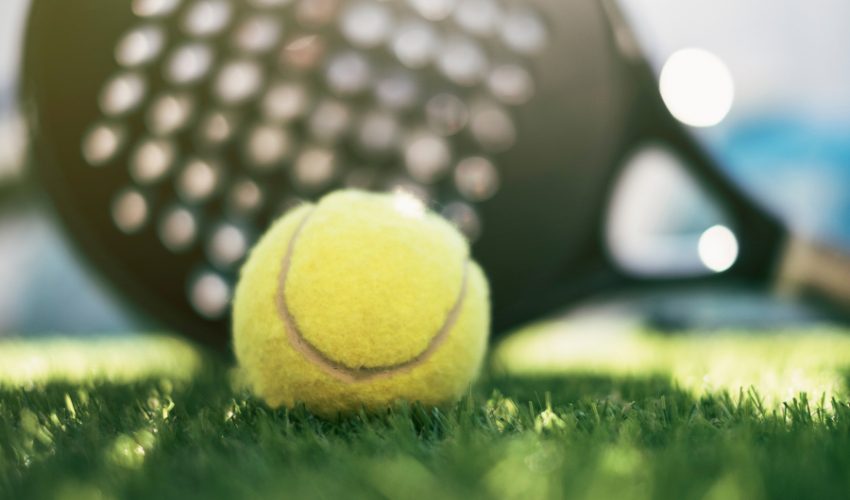
Scoring & Match Format Terms
Padel follows traditional tennis scoring but has some unique match variations.
Game / Set / Match
Follows tennis logic: 15–30–40–game, six games win a set, and matches are best of three sets.
Deuce
When both teams reach 40. Some formats use a sudden death point afterward.
Tiebreaker
Played at 6-6 in a set – first to seven points (by two) wins the set.
Golden Point
Used instead of deuce. At 40-40, the next point wins the game – adds intensity.
Americano / Mexicano
Popular amateur formats. Americano rotates partners, while Mexicano adds team-based scoring structures.
Specialty Shots & On-Court Behavior
Padel’s charm lies in its spontaneous moments. Here are some of the flashy or situational shots you might see.
Tweener
The between-the-legs shot. Often defensive but can turn the point around spectacularly.
Drop Shot
Soft shot just over the net. Deadly if executed well, especially when opponents are far back.
Passing Shot
A precise shot that gets by players at the net, using the line or angles.
Lob
Floated shot used to regain net control or push back opponents.
Physical & Technical Concepts
Success in padel depends on technique, timing, and body mechanics.
Sweet Spot
The best contact point on your racket – provides ideal control and power.
Grip
The way you hold the racket. The continental grip is common in padel for its versatility.
Footwork
Efficient, explosive movements that position you for each shot.
Follow-through
The continuation of your swing. Helps with control, spin, and preparation for the next move.
Preparation
Racket ready, body balanced – key to handling the fast pace and wall rebounds.
Court Positioning & Movement
Doubles dynamics require smart coordination between teammates.
Formation
How teammates line up – parallel (side-by-side) or staggered (one back, one forward).
Switching
Changing sides to cover the court better or respond to an angled shot.
Covering
Backing up your partner or defending gaps. Great teamwork wins padel points.
Recovery
Getting back into optimal position after a shot. Quick recovery is critical in long rallies.
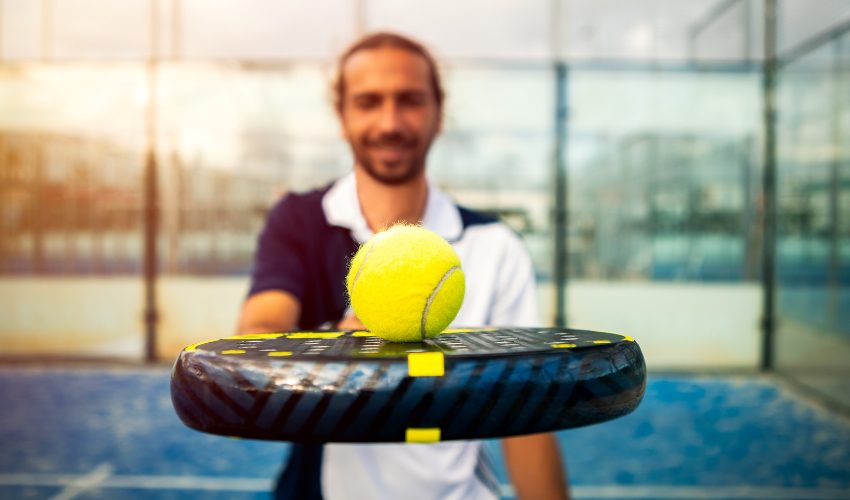
Equipment Specs & Technical Terms
Understanding the details behind your gear can give you a serious edge.
Core
The internal foam of the racket (EVA or FOAM). It impacts feel, power, and comfort.
Frame
The outer structure – influences durability and overall control.
Balance
Refers to weight distribution: head-heavy (power), head-light (control), or even.
Weight
Ranges between 360g–390g. Heavier rackets offer more power, lighter ones give better maneuverability.
Weather & Playing Conditions
Environmental factors can change how padel is played, especially outdoors.
Wind
Can drastically affect lobs and serves. Wind awareness helps you adjust strategies.
Indoor vs. Outdoor
Indoor = consistent conditions. Outdoor = sun, wind, and surface differences to navigate.
Court Surface
Usually artificial turf or synthetic materials. Each impacts bounce and movement differently.
Professional & Competitive Terms
The elite level of padel has its own vocabulary.
World Padel Tour (WPT)
The most prestigious professional tour – where top global players compete.
Premier Padel
A newer but major circuit gaining traction worldwide.
Ranking
Determines player status, seedings, and qualifications in pro tournaments.
Qualifying
The preliminary rounds before the main draw of a tournament.
Wild Card
Special invite to a tournament, often for local heroes or emerging talents.
Training & Development Terms
Improving at padel involves consistent, structured practice.
Drill
Repetitive exercises to build specific skills – like volleys, wall rebounds, or footwork.
Lesson
One-on-one or small group instruction led by a coach.
Clinic
Larger group sessions focused on learning fundamentals or advanced strategies.
Friendly / Practice Match
Non-competitive play to experiment and refine your game.
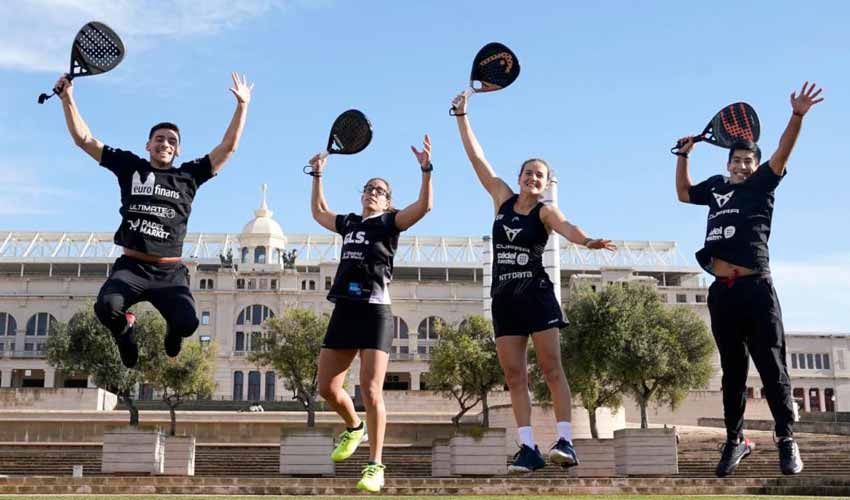
Social & Community Terms
Padel is as much about people as it is about points.
Padel Club
A facility with multiple courts, coaching options, and a strong social scene.
Social Padel
Casual games meant more for fun than competition – a great way to meet fellow players.
Round Robin
Tournament format where each team plays several matches. Popular in clubs and social events.
Mix
Mixed-gender teams – a common and inclusive format in both recreational and competitive play.
Regional & International Variations
Spanish remains the dominant language in padel, but terms vary across the world.
Pala
The Spanish word for a racket – still used in many countries.
Pista
Means court in Spanish – often used in Latin America and Spain.
Punto
The Spanish word for point – frequently heard in pro commentary and Latin leagues.
Common Mistakes & Misunderstandings
Some terms are often confused – here’s how to tell them apart:
- Smash vs. Bandeja: A smash is powerful and meant to end the point. A bandeja is slower and keeps you in control.
- Volley vs. Half-Volley: A volley is taken before the bounce; a half-volley is right after the bounce.
- Let vs. Fault: A let means replay; a fault means point lost (or second serve in case of serving).
The Evolution of Padel Terminology
As the game grows, so does its language. Innovations in tactics, tech, and broadcast commentary continue to introduce new terms. Staying updated ensures you’re in sync with how modern padel is played and discussed.
Practical Application of Terms
Knowing these terms isn’t just for show – it helps you:
- Understand your coach and partner clearly
- Make smarter decisions during points
- Analyze your matches
- Join conversations in clubs and online forums
Beginners should start with the court and gameplay basics. Intermediate players will benefit from shot and strategy terms. Advanced players should strive to master the full glossary.
Conclusion: Speak Padel, Play Better
Mastering padel vocabulary is a powerful step toward becoming a smarter, more strategic player. It connects you to the sport’s rich heritage and allows you to fully immerse yourself in padel culture – whether you’re coaching, learning, or simply having fun.
Remember: learning the language of padel isn’t just about definitions. It’s about unlocking a deeper understanding of this thrilling sport.
So next time you step on the pista, bring your game and your words up to speed.
Do you want to improve your Padel Gameplan? For additional insight of the sport and any Padel advice, keep your eyes peeled at PadelGamePlan.com!
FAQ – PADEL IMPROVEMENT
How to get better at padel?
You will need regular practice, hit on the walls and watch matches of professionals. Read this Article – How to play Padel Tennis.
How can I improve my Service?
For more information on Padel Service, please read the Article – Best Padel Serve Techniques
Can I know more about the Rules of Padel Tennis?
Absolutely, for a beginner-friendly explanation of the Rules of Padel Tennis, please have a look at the Article – Rules of Padel Tennis. For Official Rules, please download the official rules of Internatlonal Padel Federation here.
FAQ – PADEL FOR CHILDREN
At what age should children start Padel Tennis for children?
Children as young as 4 can start out with foam balls and mini-rackets. The majority of clubs are for ages 5–15.
How does padel improve teamwork in kids?
Doubles requires constant communication and mutual strategies; collaboration is natural.
Can padel help academically?
Doubles requires constant communication and mutual strategies; collaboration is natural.
What is a good reason why padel is safer than tennis for little kids?
Enclosed courts, slower balls, and lighter gear reduce injury risks significantly.
Is there any competitive padel opportunity for kids?
Absolutely! Try to look for Junior leagues that offer Padel tournaments for under-12 and teen divisions. the positive impact of padel tennis on children
FAQ – PADEL EQUIPMENT
Do I need special padel tennis attire?
Please read the Article – Top Padel Clothing Essentials.
Do you have a checklist of padel tennis essentials I’ll need?
Could you recommend which padel balls I should use?
Please read the Article – Best Padel Balls.
Planning a Padel Tournament?
Use our Free Tool and get the schedule in seconds.
FAQ – PADEL TENNIS COURT
Is it possible to erect a padel court in my garden?
Installation is possible with a minimum area of 10m × 20m, subject to local zoning approval. For more information, Read this Article.
How much the cost of a padel court?
A typical padel court can range from AED 335,000 to AED 1,113,000, depending on materials, location and amenities. See the full cost breakdown here: Article – How much does it cost to build a padel court.
What about lighting required for the padel court – what advice can you give on that?
Please have a read through on the Article – Essential Padel Lighting Tips.


